
Did you know that India is a country where animals are worshipped?
For instance, the owl is associated with Goddess Lakshmi—the goddess of wealth. The eagle is the vehicle of Lord Vishnu, while monkeys are associated with Lord Hanuman. And Goddess Saraswati (the goddess of knowledge) rides a swan.
If you’re familiar with the Indian god, Lord Krishna, most pictures and paintings have him playing the flute among the cows and other domestic animals. Hindus also consider cows to be their “mother.” And that’s not all—cows have allegedly become a religious symbol.
Learning the names of animals in Hindi can not only expand your current vocabulary, but also help you better understand Indians and their intense connection with animals. In addition, knowing these words can make it easier for you to strike up a conversation with just about anyone—animal lovers or not, humans tend to have a strong fascination with the animal world.
In this article, you’ll also learn the names of animal body parts, what sounds animals make in Hindi, and a few colloquial idioms related to animals.
Let’s go!
 Table of Contents
Table of Contents
- Why learn animal names in Hindi?
- Animal Vocab Basics
- At Home (Pets)
- On the Farm (Farm Animals)
- In the Wild / Forest / Safari (Land Animals / Mammals)
- Aquatic Animals
- Bugs and Insects
- Birds and Reptiles
- Animal Body Parts
- Animal Sounds
- Animal-Related Idioms and Slang Expressions
- Improve Your Hindi with HindiPod101.com
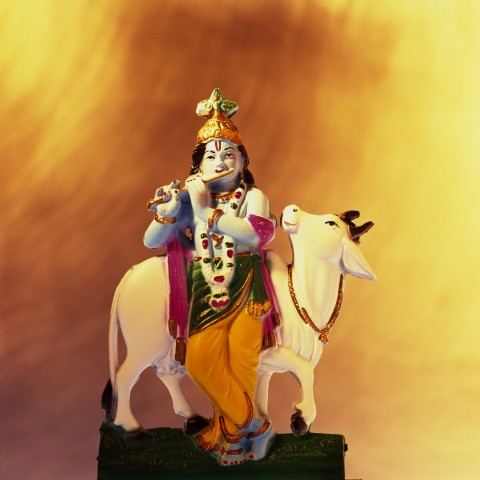
1. Why learn animal names in Hindi?
Need some practical reasons to get familiar with Hindi animal words?
Well, as mentioned, animals play a central role in Hinduism. This means that learning animal names in Hindi will allow you to more easily connect with native speakers and start conversations.
Living in India also means dealing with lots of unexpected animal encounters! 😉 It may sound strange, but one can often find stray cows and dogs roaming the streets and roads. And the natives happen to be totally okay with it. This is much more common in small towns and rare in big cities. So, if you’re about to visit places that are not metropolitan, be prepared to honk and wait for the animals to move at their own will.
Moreover, farming being the backbone of the Indian economy, cows, bulls, and other cattle are pretty widespread in the country. This is especially the case in villages and rural areas.
I guess we’ve covered plenty of reasons why learning animal names in Hindi is essential. So, let’s jump to our main section without any further delays!
2. Animal Vocab Basics
In the Hindi language, every noun and pronoun has a gender attached to it (masculine or feminine). As you’ll see, many of the animal words on our list have a masculine version and a feminine version, depending on the gender of the animal in question. We have an entire article about grammatical gender in Hindi, so make sure to check it out if you’d like to learn more!
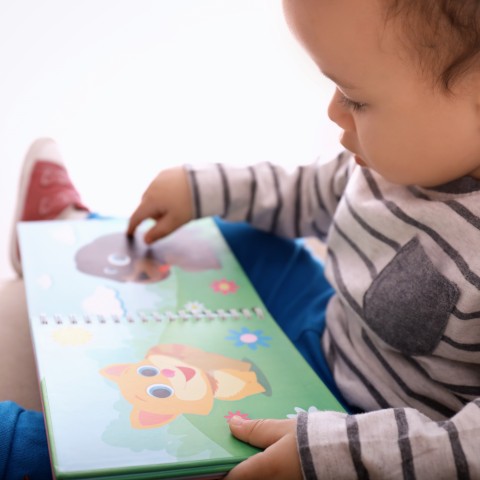
Before we dive into the more specific animal names, let’s look at some basic vocabulary for animal categories:
- “Animal” = जानवर (jaaNavar)
- More popular in daily use
- “Animal” = पशु (pasu)
- Very formal, mostly used in textbooks
- “Mammals” = स्तनधारी (STaNaDHaarii)
- “Domestic”= पालतू (paaLaTuu)
- “Pet” = पालतू (paaLaTuu)
- “Wild” = जंगली (jangaLii)
- “Bird” = चिड़िया (cidiyaa)
- “Aquatic” = समुद्री (SamuDrii)
- “Bugs” / “Insects” = कीड़ा / कीड़े (kiidaa / kiide)
3. At Home (Pets)
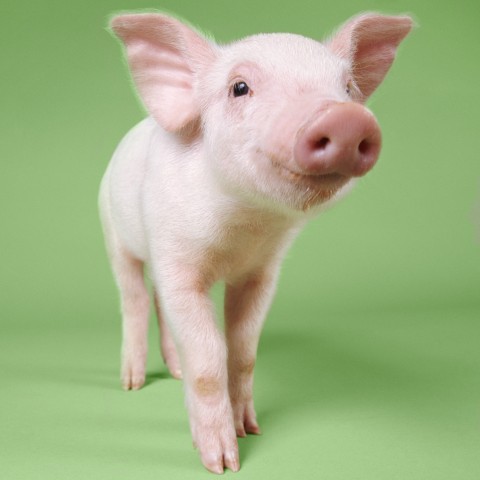
Would you like to pet a piggy?
Dogs and cats top the list of popular pets in India. We also have plenty of stray dogs, and it is common in Indian culture to feed these homeless animals with leftover meat, bread, chapatis mashed in milk, and other foods.
- “Male cat” = बिल्ला (biLLaa)
- “Female cat” = बिल्ली (biLLii)
- “Male dog” = कुत्ता (kuTTaa)
- “Female dog” = कुतिया (kuTiyaa)
- “Male mouse” = चूहा (cuuhaa)
- “Female mouse” = चुहिया (cuhiyaa)
- “Rabbit” = ख़रगोश (kharagos)
- “Squirrel” = गिलहरी (giLaharii)
- “Guinea pig” = गिनी पिग (giNii pig)
4. On the Farm (Farm Animals)
We’ve already discussed how important farming is in this country, so it should come as no surprise that our farm animals are indispensable!
The primary farm animals in India are cows, buffaloes, hens, and goats. Sheep, donkeys, and horses are popular in the mountainous regions. Some of these animals are domesticated solely for milk and for carrying loads, while others are raised for their meat.
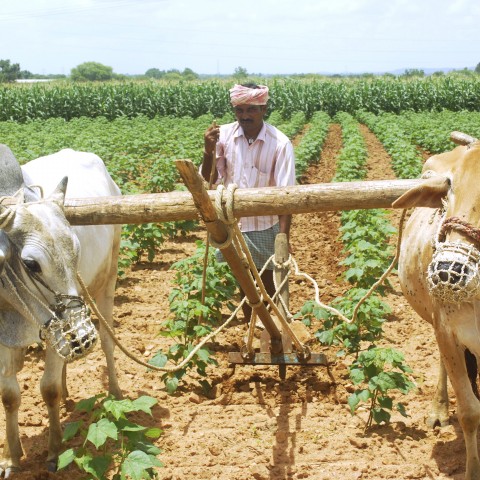
Meet Oxen: The backbone of farming in India
Here’s a list of common domestic animals in Hindi and English:
- “Cow” = गाय (gaay)
- “Buffalo” = भैंस (bhainS)
- “Horse” = घोड़ा (ghodaa)
- “Donkey” = गधा (gaDHaa)
- “Duck” = बत्तख़ (baTTakh)
- “Hen” = मुर्ग़ी (murgii)
- “Rooster” = मुर्ग़ा (murgaa)
- “Pig” = सुअर (Suar)
- “Female goat” = बकरी (bakarii)
- “Male goat” = बकरा (bakaraa)
- “Sheep” = भेड़ (bhed)
5. In the Wild / Forest / Safari (Land Animals / Mammals)
India has a wide range of terrains. That explains the rich variety of animal species present in the different parts of the country. Here are the names of the most popular wild animals in Hindi and English:
- “Lion” = शेर (ser)
- “Lioness” = शेरनी (serNii)
- “Tiger” = बाघ (baagh)
- “Tigress” = बाघिन (baaghiN)
- “Male elephant” = हाथी (haaTHii)
- “Female elephant” = हथिनी (haTHiNii)
- “Fox” = लोमड़ी (Lomadii)
- “Bear” = भालू (bhaaLuu)
- “Wolf” = भेड़िया (bhediyaa)
- “Male monkey” = बंदर (baNDar)
- “Female monkey” = बंदरिया (baNDariyaa)
- “Deer” = हिरण (hiran)
- “Hippopotamus”= दरियाई घोड़ा (Dariyaaii ghodaa)
- “Giraffe” = जिराफ़ (jiraaf)
- “Frog” = मेंढक (mendhak)
- “Male camel” = ऊँट (uunt)
- “Female camel” = ऊँटनी (uuntNii)
- “Mongoose” = नेवला (NevaLaa)
- “Bat” = चमगादड़ (camagaaDad)
- “Owl” = उल्लू (uLLuu)
- “Leopard” = तेंदुआ (TenDuaa)
- “Jackal” = सियार (Siyaar)
- “Panther” = तेंदुआ (TenDuaa)
- “Hyena” = लकड़बग्घा (Lakadabagghaa)
6. Aquatic Animals
The worlds that lie within our oceans and other bodies of water are nothing less than a mystery. The diverse population of fish and aquatic animals invokes such a strong sense of curiosity in our minds. Let’s find out how to pronounce the Hindi names of these popular animals!

Life under the ocean!
- “Shark” = हाँगर (haangar)
- “Dolphin” = सूंस (SuunS)
- “Octopus” = अष्टबाहु (astabaahu)
- “Fish” = मछली (machaLii)
- “Turtle” / “Tortoise” = कछुआ (kachuaa)
- “Whale” = व्हेल (vheL)
- “Starfish” = तारामीन (TaaraamiiN)
- “Jellyfish” = जेलीफ़िश (jeLiifis)
- “Prawns” = झींगा मछली (jhiingaa machaLii)
- “Seahorse” = समुद्री घोड़ा (SamuDrii ghodaa)
- “Sealion” = जलसिंह (jaLaSinh)
- “Oyster” = सीप (Siip)
7. Bugs and Insects
Whether you like it or not, you’re sure to stumble upon bugs and insects from time to time. While these creatures look scary and creepy to some people, there are others who find them colorful and fascinating. Whichever side you’re on, learning the Hindi names of some common bugs won’t harm you! 😉
- “Ant” = चींटी (ciintii)
- “Honeybee” = मधुमक्खी (maDHumakkhii)
- “Spider” = मकड़ी (makadii)
- “Housefly” = मक्खी (makkhii)
- “Butterfly” = तितली (TiTaLii)
- “Mosquito” = मच्छर (macchar)
- “Insect” = कीड़ा (kiidaa)
- “Grasshopper” = टिड्डा (tiddaa)
- “Cricket” = झींगुर (jhiingur)
- “Caterpillar” = इल्ली (iLLii)
- “Earthworm” = केंचुआ (kencuaa)
- “Cockroach” = तिलचट्टा (TiLacattaa)
- “Snail” = घोंघा (ghonghaa)
8. Birds and Reptiles
This category includes some of the most widespread birds and reptiles present around us and in the wild. Some of them even live inside our homes and gardens, such as lizards, sparrows, and chameleons.
- “Birds” = चिड़िया (cidiyaa)
- “Eagle” = चील (ciiL)
- “Parrot” = तोता (ToTaa)
- “Cuckoo” = कोयल (koyaL)
- “Goose” = हंसिनी (haNSiNii)
- “Gander” = हंस (haNS)
- “Myna” = मैना (maiNaa)
- “Pigeon” = कबूतर (kabuuTar)
- “Sparrow” = गौरैया (gauraiyaa)
- “Crow” = कौवा (kauvaa)
- “Dove” = सफ़ेद कबूतर (SafeD kabuuTar)
- “Woodpecker” = कठफोड़वा (kathfodwa)
- “Weaverbird” = बया (bayaa)
- “Vulture” = गिद्ध (giDDH)
- “Kite” = चील (ciiL)
- “Hawk” = बाज़ (baaz)
- “Crocodile” = मगरमच्छ (magaramacch)
- “Lizard” = छिपकली (chipakaLii)
- “Tortoise” = कछुआ (kachuaa)
- “Snake” = साँप (Saanp)
- “Alligator” = घड़ियाल (ghadiyaaL)
- “Chameleon” = गिरगिट (giragit)
9. Animal Body Parts
Knowing the body parts of animals in Hindi is just as important as knowing their names, especially if you’re interested in studying animals. So, what are the Hindi words for different animal body parts? Let’s find out!
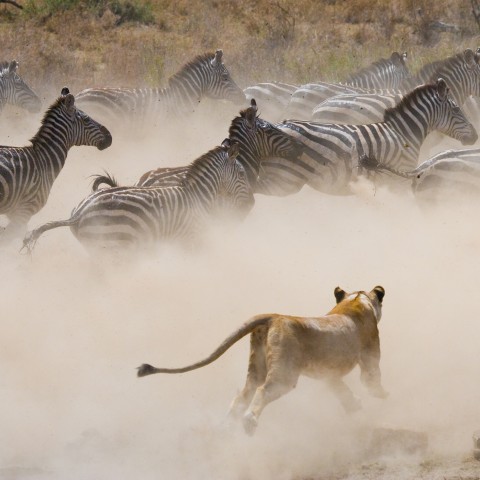
What’s in the wild?
- “Wing” / “Feather” = पंख (pankh)
- “Tail” = पूंछ (puunch)
- “Hoof” = ख़ुर (khur)
- “Claw” = पंजा (paNjaa)
- “Trunk” = सूंड (Suund)
- “Tusk” = हाथी-दांत (haaTHii-DaanT)
- “Stinger” = डंक (dank)
- “Scale” = शल्क (saLk)
- “Spine” = काँटा (kaantaa)
- “Fin” = मछली का पर (machaLii kaa par)
- “Horn” = सींग (Siing)
10. Animal Sounds
It’s time to get familiar with the different animal sounds in Hindi. While they might look a bit complicated now, with practice you’re sure to master them in no time.
- “To growl” = गुर्राना (gurraaNaa)
- “To bark” = भौंकना (bhaunkaNaa)
- “To roar” = दहाड़ना (DahaadaNaa)
- “To chirp” = चहचहाना (cahacahaaNaa)
- “To bellow” = चिंघाड़ना (cinghaadaNaa)
- “To croak” = टरटराना (tarataraaNaa)
- “To buzz” = भनभनाना (bhaNabhaNaaNaa)
- “To hum” = गुनगुनाना (guNaguNaaNaa)
- “To moo” = राँभना (raambhaaNaa)
- “To neigh” = हिनहिनाना (hiNahiNaaNaa)
11. Animal-Related Idioms and Slang Expressions
Finally, we’ve arrived at the most interesting and fun section of the article! You’ll see how animals influence the idioms and slang expressions of native Hindi speakers, which will help you sound more like a native yourself! While the true meanings of these idioms are far from their literal translations, this is what makes them so much fun to study.
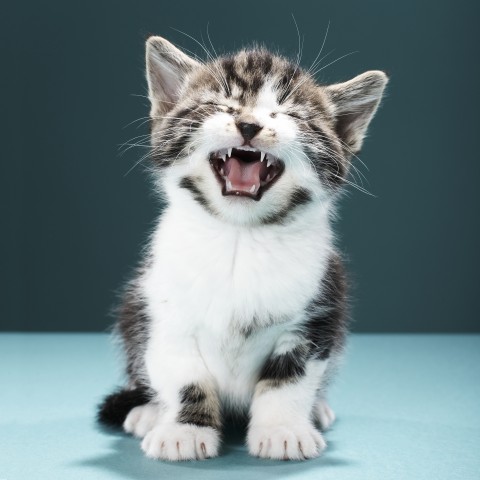
Oh! Look at this cutie pie kitten!
- पेट में चूहे कूदना (pet men cuuhe kuuDaNaa)
Literal Meaning: “Mice jumping in the stomach”
Actual Meaning: Starving or feeling very hungry
- बलि का बकरा (baLi kaa bakaraa)
Literal Meaning: “A goat for sacrifice”
Actual Meaning: To become the scapegoat
- घर की मुर्गी दाल बराबर (ghar kii murgii DaaL baraabar)
Literal Meaning: “A home-cooked chicken is equivalent to home-cooked lentils.”
Actual Meaning: Familiarity breeds contempt.
- धोबी का कुत्ता न घर का न घाट का (DHobii kaa kuTTaa Na ghar kaa Na ghaat kaa)
Literal Meaning: “A dog owned by a washerman is useless.”
Actual Meaning: A person who has no importance
- शेर की खाल में भेड़िया (ser kii khaaL men bhediyaa)
Literal Meaning: “A wolf in the skin of a lion”
Actual Meaning: A person who is trying to act courageous, but is not
- गधे के सर से सींग ग़ायब होना (gaDHe ke Sar Se Siing gaayab hoNaa)
Literal Meaning: “Like a donkey whose horns vanish”
Actual Meaning: To disappear like it was never there
- गीदड़ भबकियाँ (giiDad bhabakiyaan)
Literal Meaning: “Jackal growling”
Actual Meaning: False threats
- बकरे की माँ कब तक ख़ैर मनाएगी (bakare kii maan kab Tak khair maNaayegii)
Literal Meaning: “How long will the goat’s mother pray for the life of its goat-child”
Actual Meaning: Trouble cannot be averted forever
- जल बिन मछली (jaL biN machaLii)
Literal Meaning: “Fish without water”
Actual Meaning: To be restless
- ऊँट के मुँह में ज़ीरा (uunt ke munh men ziiraa)
Literal Meaning: “Feeding a camel with cumin seeds”
Actual Meaning: Providing a negligible amount where a lot is actually needed
- खिसियानी बिल्ली खंबा नोचे (khiSiyaaNii biLLii khambaa Noce)
Literal Meaning: “An embarrassed cat attacking and biting a pole”
Actual Meaning: When embarrassed or defeated, a person tries to take it out on something else.
- सौ चूहे खा के बिल्ली हज को चली (Sau cuuhe khaa ke biLLii haj ko caLii)
Literal Meaning: “After eating hundreds of mice, the cat is finally going on a religious trip.”
Actual Meaning: Being a hypocrite
- चूज़ा (cuuzaa)
Literal Meaning: “Chicken”
Actual Meaning: Somebody too easy to handle, especially in aggressive or violent situations
- गधा (gaDHaa)
Literal Meaning: “Donkey” / “Ass”
Actual Meaning: A totally stupid person
12. Improve Your Hindi with HindiPod101.com
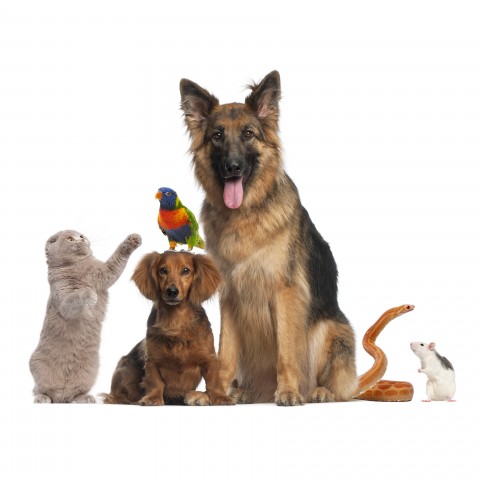
What’s your favorite pet animal?
As you can see, learning the names of animals in Hindi is something that will prove quite useful while in India. We hope you enjoyed going through this lesson as much as we enjoyed writing it!
By the way, what’s your favorite animal? Are there any animals in your country or region that we forgot to include on our list? Let us know in the comments, and we’ll be glad to get back to you with its name in Hindi.
If you want to continue learning Hindi in the fastest, easiest, and most fun way possible, make sure to create your free lifetime account on HindiPod101.com today! In addition to a full-fledged lesson library, we offer our students a grammar bank and a range of free vocabulary lists—not to mention a number of other free resources, such as this Hindi-to-English dictionary. Having trouble accessing any of our content? Feel free to reach out to us or browse through our FAQ section.
Happy Hindi learning!










